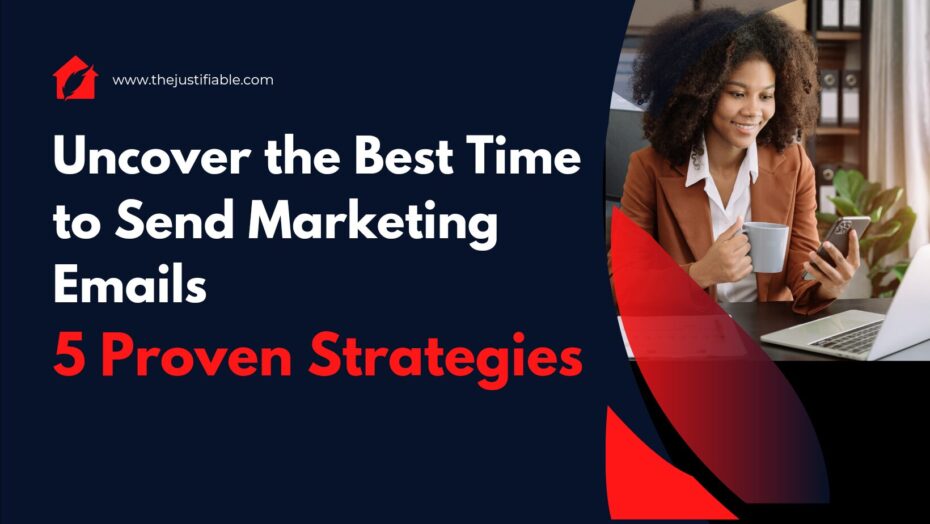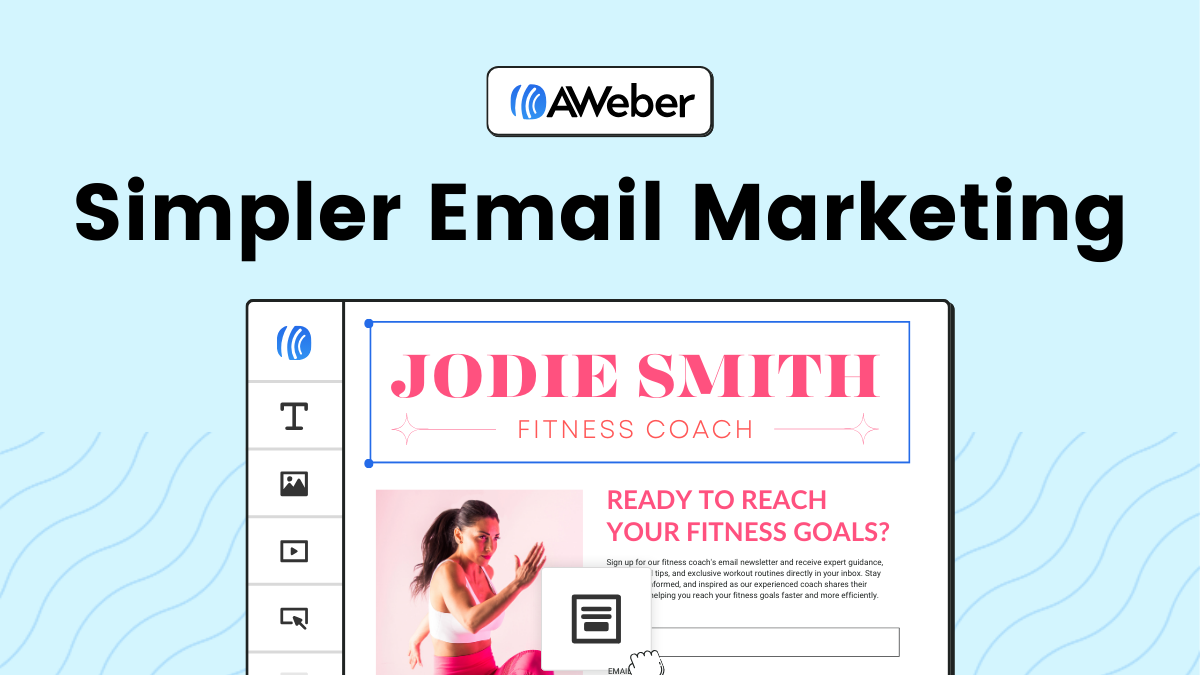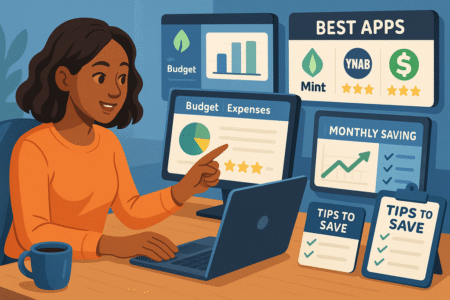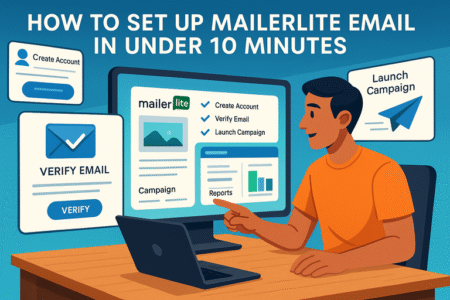Table of Contents
Deciding on the best time to send marketing emails isn’t a mere game of guesswork. It involves understanding your audience, their habits, and the various external factors that influence their interaction with emails. When you get the timing right, you’re not just increasing your open rates; you’re making a strategic move that strengthens your brand’s presence in the crowded inboxes of your subscribers.
This article delves deep into the art and science of email timing, uncovering proven strategies that can help marketers make informed decisions. By the end, you’ll have a clearer understanding of why timing matters and how to leverage it to your advantage.
Why Timing Matters in Email Marketing
In the realm of digital communication, especially when looking at the competitive space of email marketing, timing isn’t just a minor detail; it’s a pivotal component of success. Determining the best time to send marketing emails can significantly elevate the effectiveness of your campaign.
But why does timing carry such weight? Let’s explore its immediate and long-term impacts.
The Immediate Impact of Well-timed Emails
Finding the right moment to hit the ‘send’ button on your marketing emails can create ripples that echo throughout your campaign. When emails land in your subscribers’ inboxes at an optimal time, the likelihood of them being opened skyrockets. Subscribers are more engaged, less distracted, and are thus more inclined to interact with the content.
Think of it like this: If you’re trying to converse with someone during their busiest hours, your words might go unheard. But catch them during a quiet moment, and they’re all ears. Similarly, the best time to send marketing emails is when subscribers are most receptive.
This results in higher open rates, leading to increased click-through rates, and often, a noticeable bump in conversions. The immediate effects of timing can be seen in metrics that matter, translating to tangible results for businesses.
The Long-term Benefits
While the immediate outcomes of sending emails at the right time are evident, there are also substantial long-term benefits that marketers should consider. Consistently reaching out to your audience when they’re most active and willing to engage cultivates trust. They start to anticipate, and even look forward to, your messages. Over time, this anticipation builds loyalty, transforming casual subscribers into devoted brand advocates.
Moreover, by optimizing the timing of your marketing emails, you indirectly reduce the chances of your messages being categorized as spam or junk. With fewer emails going unread or being instantly deleted, the reputation of your sender domain improves. And in the long run, an enhanced sender reputation ensures better deliverability rates, so your emails continue to find their rightful place in your subscribers’ primary inboxes.
Understanding Your Audience’s Habits
To discern the best time to send marketing emails, it’s paramount to know who’s on the other side of the screen. Every audience has unique habits, routines, and preferences. Recognizing these nuances will not only enhance the effectiveness of your email campaigns but also establish a more personalized connection with your subscribers.
To truly tailor your timing to your audience’s rhythm, it’s essential to understand two primary aspects: the segmentation of your email list and the devices they commonly use.
Segmenting Your Email List
One universal truth about email marketing is that there’s no one-size-fits-all approach. Depending on their location and lifestyle, your subscribers could be active at very different times.
For instance, when considering different time zones, the best time to send marketing emails to a subscriber in New York might be vastly different from a recipient in London or Tokyo. By segmenting your list based on geographical regions, you can optimize sending times to coincide with each area’s peak activity hours.
Furthermore, diving deeper into the demographics of your audience can offer enlightening insights. A college student’s daily routine will likely differ from a 9-to-5 professional or a retiree. Understanding these demographic-specific patterns can be invaluable.
If a significant portion of your subscribers are professionals, sending emails early in the morning or during lunch breaks might yield better results. Conversely, if you’re targeting younger audiences or night owls, late evening or night could be the golden window.
The Role of Mobile vs. Desktop Usage
In the ever-evolving landscape of technology, the devices your audience uses to access their emails play a crucial role in determining the best time to send marketing emails.
For mobile users, emails are often checked sporadically throughout the day – during commutes, lunch breaks, or while waiting in lines. Thus, for a predominantly mobile audience, the ideal sending window might be broader, spanning various intervals throughout the day.
On the other hand, desktop users often check their emails during specific time frames, commonly at the beginning of the workday or in the late afternoon before signing off. If your subscribers primarily access their emails via desktop, aligning your send times with typical office hours might be beneficial.
It’s also worth noting that device preferences can sometimes correlate with demographics. For instance, younger generations might lean more towards mobile, while professionals might favor desktops during work hours. Recognizing these overlaps can further fine-tune your email timing strategy.
The 5 Proven Strategies to Determine the Best Time to Send Marketing Emails
Achieving success in email marketing is akin to mastering a musical instrument; you need to fine-tune your approach until you hit the right notes. While content, design, and segmentation play pivotal roles, finding the best time to send marketing emails remains a cornerstone of this endeavor.
Over the years, several strategies have emerged as tried-and-true methods to nail down this crucial timing. Among these, leveraging advanced email marketing tools stands as a prominent technique.
1. Leverage Email Marketing Tools
In the past, marketers had to rely heavily on intuition, sporadic feedback, and broad industry benchmarks to decide on email timings. However, today’s sophisticated email marketing tools have transformed this landscape, offering in-depth analytics and insights tailored to one’s unique audience.
Modern email marketing platforms come equipped with powerful features that can track a plethora of metrics, from open rates and click-through rates to more nuanced data like user engagement over time. These tools provide a comprehensive view of when subscribers are most active, allowing businesses to adjust their send times accordingly.
One of the most valuable features many of these tools offer is A/B testing or split testing. This involves sending the same email at different times to different segments of your audience and then comparing the results.
Such tests can reveal not just the best time to send marketing emails, but also the optimal days, or even specific windows of time when subscribers are markedly more engaged. By continuously conducting these tests and analyzing the results, businesses can pinpoint their audience’s sweet spots with remarkable precision.
But it’s not just about data. These tools also provide automation options. Once you’ve identified the best time to send marketing emails for your audience, you can automate the process, ensuring consistency in delivery. This automation not only saves time but also ensures that your emails consistently reach your subscribers when they’re most likely to engage.
2. Optimize for Days of the Week
The quest to discover the best time to send marketing emails often overshadows another crucial aspect: the day of the week. Just as specific hours resonate more with audiences, certain days can significantly impact your email engagement rates.
Every audience is different, but the rhythm of a week, influenced by work schedules, societal norms, and personal habits, plays a defining role in when people engage with their inboxes.
For many businesses, weekdays—specifically mid-week days like Tuesday and Wednesday—often see higher engagement rates. These are days when people are in the full swing of their routines, actively checking their inboxes for updates, offers, and news.
Conversely, weekends, especially Sundays, might see a dip in open rates for certain demographics as people tend to disconnect from their professional lives and engage in personal activities.
However, this isn’t a strict rule. For some brands, especially those catering to leisure activities, entertainment, or hobbies, weekends might yield the best engagement. The key lies in understanding the lifestyle and preferences of your audience.
Continuous testing and analysis over a span of weeks can offer insights into which days truly resonate with your subscribers, helping refine the best time to send marketing emails not just by hour, but by day.
3. Target Off-Peak Hours
In the pursuit of the ideal moment, marketers often target the most obvious time slots. While it might seem logical to send emails first thing in the morning or right after lunch, these prime times come with a pitfall: crowded inboxes. Your beautifully crafted email might be competing with dozens of others, reducing its chances of standing out.
This is where the strategy of targeting off-peak hours shines. By sending emails during less popular times, such as late mornings or early evenings, you’re entering a less cluttered space, ensuring your message doesn’t get lost in the noise.
These off-peak times are when subscribers might be taking breaks, winding down, or even casually browsing, making them more receptive to your content.
Avoiding peak inbox traffic is akin to a radio station playing your favorite song during a quiet late-night show; the reduced competition means your message can be the star of the moment.
While it might seem counterintuitive at first, targeting off-peak hours can be the secret weapon in determining the best time to send marketing emails, ensuring your content truly resonates without the cacophony of competing messages.
4. Monitor User Activity and Behavior
In the vibrant tapestry of email marketing, understanding your audience goes beyond just knowing their demographics; it involves keeping a keen eye on their digital footprints. Monitoring user activity and behavior is pivotal to ascertain the best time to send marketing emails.
Each click, open, and even periods of inactivity weave a story about your subscribers, and tuning into this narrative can significantly enhance your campaign’s effectiveness.
A user who consistently opens emails in the evening is revealing a pattern. Similarly, subscribers who interact more during weekends or those who dive deep into content, spending time reading or clicking on embedded links, offer a glimpse into their engagement patterns.
By leveraging analytics tools and tracking these behaviors, marketers can tailor send times to better align with individual or segment-specific rhythms. It’s akin to a café playing its most lively tunes when it notices customers are most active. The environment, or in this case, the timing, is adjusted to resonate with the audience’s tempo.
5. Adjust for Seasonal and Holiday Patterns
The passage of seasons and the ebb and flow of holidays can greatly influence subscriber engagement. Just as retail stores decorate their windows for holiday sales, email marketers must recognize and adjust to the unique spikes and drops during certain times of the year when determining the best time to send marketing emails.
For instance, during holiday seasons, inboxes are often inundated with promotional offers. While this might seem like an opportune time to jump on the bandwagon, it’s also when competition is at its peak. On the other hand, the post-holiday period, often seen as a lull, could be an excellent time for your emails to shine without as many competing messages.
Similarly, industries with seasonal products or services might notice spikes in user engagement during specific periods. A company selling winter gear would naturally see increased interaction during the colder months. Recognizing these patterns and adjusting email send times accordingly can ensure that your message aligns with your subscribers’ current interests and needs.
Moreover, global brands should also consider cultural and regional holidays. What might be a significant holiday in one region could be a regular day elsewhere. Ensuring that your emails respect and recognize these differences not only enhances engagement but also fosters a sense of inclusivity and respect among your subscribers.
Fine-tuning Your Email Timing Strategy
Embarking on the journey to discover the best time to send marketing emails is akin to being a ship’s captain navigating through ever-changing seas. The initial course you set may be based on a combination of research, intuition, and past experiences.
However, the true art lies in the ability to adjust your sails as the winds change. For email marketers, this adaptability is achieved through continuous reflection, understanding the evolving dynamics of content, and by giving due importance to the often overlooked hero – the subject line.
Periodic Review of Analytics
In the realm of digital marketing, resting on past laurels can be a pitfall. While a certain email timing might yield great results now, it’s essential to remember that audience behaviors, preferences, and lifestyles are in constant flux. This is where a periodic review of analytics becomes indispensable.
For instance, a significant shift in user engagement patterns might be indicative of changes in your audience’s routines, perhaps due to seasonal job demands or academic schedules. Similarly, sudden spikes or drops in open rates might be tied to broader societal trends, local events, or global happenings.
By routinely diving into these analytics, marketers can glean insights and preemptively adjust their strategies. It’s like a gardener who prunes and nurtures plants based on observed growth patterns, ensuring optimal health and bloom. In the same vein, adjusting your email send times as audience behavior shifts ensures that your communications remain effective, relevant, and timely.
The Role of Content and Subject Line
While the adage goes, “don’t judge a book by its cover,” in the world of email marketing, the “cover” or subject line often dictates whether an email even gets opened. Coupled with compelling content, these two factors can play a monumental role in influencing open rates, sometimes even overshadowing the importance of timing.
Crafting an enticing subject line is the first step to pique your subscriber’s curiosity. It’s the window display that draws them into your store. Once intrigued, it’s the content’s role to keep them engaged. The best time to send marketing emails becomes exponentially more effective when paired with stellar content and a captivating subject line.
Even if an email lands in an inbox during a less-than-optimal time, a compelling subject line can still make it stand out amidst a sea of other messages. And once opened, if the content resonates, speaks to the reader’s needs, or offers value, the chances of them engaging further—be it through clicking on a link, making a purchase, or simply reading through—skyrocket.
The Power of Personalization in Timing
As marketers delve deeper into the nuances of determining the best time to send marketing emails, there’s an overarching theme that emerges: personalization. Timing is one aspect, but when combined with personalized content, it takes the engagement factor up several notches.
Understanding Individual Preferences
While aggregate data provides insights into broader audience trends, diving into individual preferences can be a game-changer. Imagine you’ve pinpointed the best general time frame to send emails to your audience. Now, further imagine tailoring that send time based on specific subscriber interactions, past open rates, and even purchase behavior.
For instance, John always opens his emails during his mid-morning break, while Jane seems to be an evening browser. Catering to these individual patterns ensures that each subscriber feels seen and understood, increasing the likelihood of engagement. It’s the digital equivalent of a barista remembering a regular’s favorite coffee order and having it ready as they walk in.
Dynamic Content as a Timing Companion
Personalized content is more than just addressing a subscriber by their first name. It encompasses tailoring offers, news, or recommendations based on past behaviors and preferences. When this dynamic content arrives at the best time for a specific subscriber, the impact is magnified.
Consider a scenario where a subscriber recently browsed a collection of summer dresses on an e-commerce site but didn’t make a purchase. Now, couple that browsing behavior with data suggesting she frequently checks her emails in the early evening. Sending her a personalized email highlighting those dresses with a limited-time offer during her preferred email-checking time can be a powerful combination.








